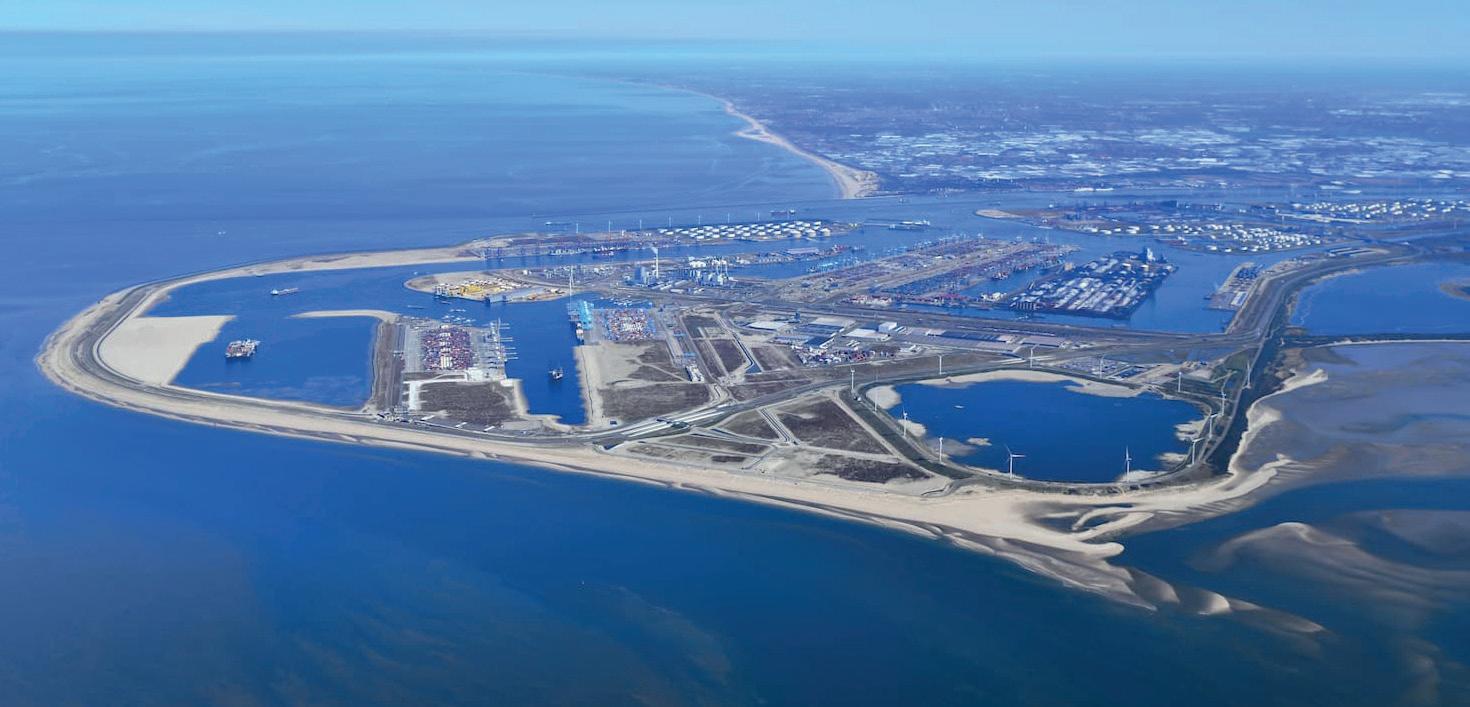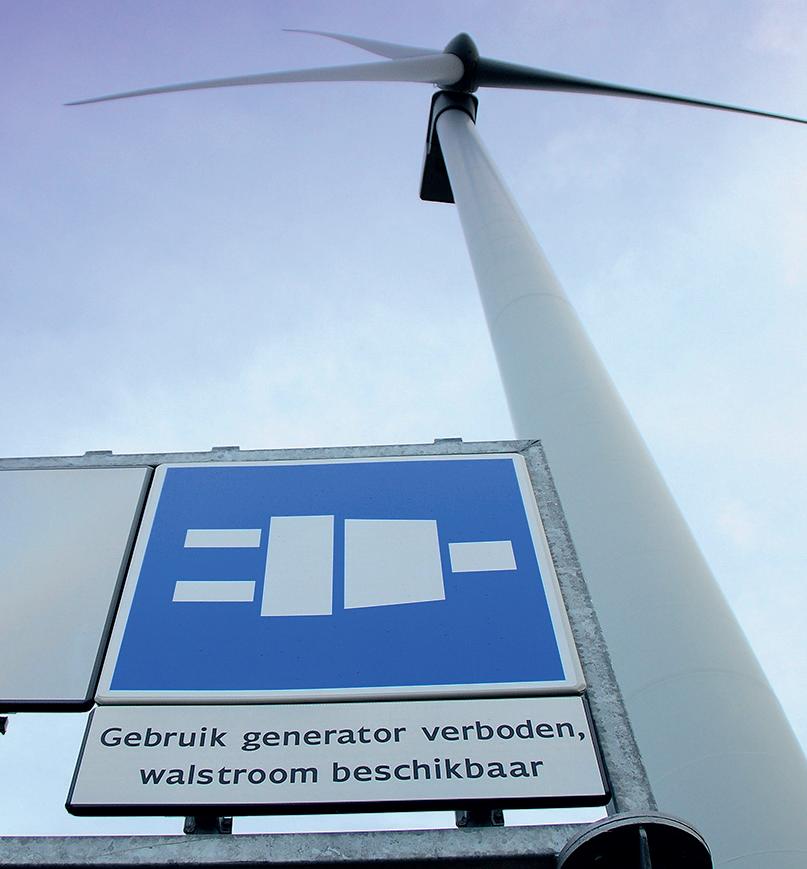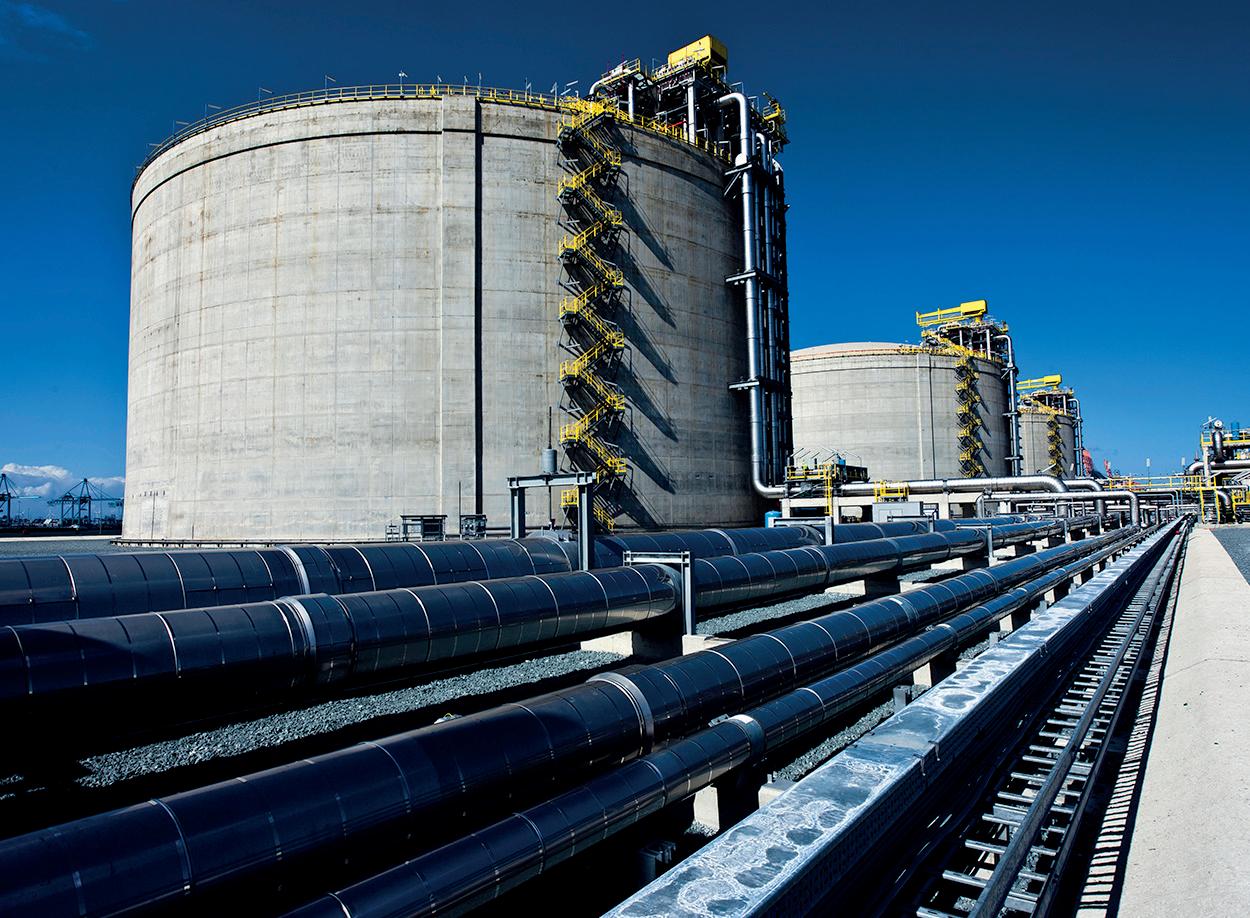
6 minute read
Hydrogen
CREATING A EUROPEAN HYDROGEN HUB
Developments in the field of hydrogen are booming in Rotterdam. At Europe’s largest energy port, work is underway on the development of all parts of the value chain from Europe’s largest green hydrogen factory to the import of hydrogen, writes Sjaak Poppe from the Port of Rotterdam
Photo Danny CornelissenPort of Rotterdam
The Port of Rotterdam is one of the most energy-intensive regions in Europe. Industry here uses a lot of energy. But most of the energy now arriving here finds its way to Germany, Belgium and other countries.
Rotterdam is gaining a reputation as the energy hub of North-western Europe and changing the energy system through electrification and hydrogen is a crucial element of the Port of Rotterdam’s strategy to make the port and industry carbon neutral in 30 years’ time.
The current energy and fuel system will be completely overhauled in the coming decades and hydrogen will play a crucial role. In Rotterdam, projects are being set up that, together, achieve all parts of the hydrogen chain. This includeshe production of carbon-free and low-carbon hydrogen (green and blue), a pipeline infrastructure in the port area, the use of hydrogen in industry, road transport and inland navigation, the import, storage and transit of hydrogen to other industrial regions and the development of a trading platform for hydrogen. The Port Authority does this with various coalitions of companies and in consultation with and support from the government.
Hydrogen production
The Dutch government plans to have 11 GW offshore wind installed in the North Sea by 2030 and is now exploring whether another 10 GW can be added before 2030. Much of that green electricity will go onshore at the Maasvlakte, the port area adjacent to the North Sea. Here, the Port of Rotterdam is developing a conversion park to produce green hydrogen. This is a business park especially for electrolysers where power connections and water are centrally organised. The first part of this conversion park can accommodate 1 GW of electrolysis capacity. The park is divided into four plots which have all been allocated to companies including Shell and joint developments by bp and Nobian as well as Air Liquide and Vattenfall.
In December, Shell ordered many of the components of their Holland Hydrogen 1 electrolyser, ahead of the FID that is planned for the Spring of 2022. This 200 MW electrolyser should be operational around two years later and will then probably be the largest in at least Europe. Bp and Nobian are planning to have their 250 MW electrolyser operational in 2025. Besides the conversion park, some companies are planning to construct green hydrogen facilities on their own sites, like Uniper. This company aims to have an 100 MW electrolyser operational by 2025. In 2030, it is expected that 2 to 2.5 MW of electrolysis capacity will be operational in Rotterdam.
Infrastructure projects
The Port of Rotterdam is working together with Gasunie to have a hydrogen backbone operational through the port and industrial complex at the time when the first electrolyser is producing hydrogen. This pipeline will start at the conversion park and is around 35 km long. It will be public infrastructure and every company in the port can connect to this pipeline. As such, this HyTransPort.RTM pipeline connects production, imports and use, creating a physical market and stimulate the production, import and use of hydrogen.
The Port of Rotterdam is currently playing an important role in supplying energy to Germany, especially North Rhine - Westphalia. This large stream of crude oil, oil products and
8 At Maasvlakte,
the Port of Rotterdam is developing a conversion park to produce green hydrogen
The Port Authority is therefore examining the possibilities of setting up import ‘‘ chains for hydrogen... Most of the imported hydrogen is not destined for the Netherlands, but will be redirected to other countries, particularly Germany, as is the case now with fossil energy
coal must be replaced by electricity and hydrogen. Together with public authorities and the private sector, the Port of Rotterdam is therefore studying the construction of a set of pipelines connecting Rotterdam with the industrial site of Chemelot in the south-east of the Netherlands and the nearby industrial sites in North Rhine – Westphalia.
These pipelines could be operational as early as 2026. Existing natural gas networks may still have sufficient capacity in the first few years, but certainly not in the long term. New energy flows require new infrastructure.
Hydrogen projects
Meanwhile, companies in Rotterdam are also working on low-carbon (blue) hydrogen. The H-vision consortium focuses on the production of hydrogen mainly from refinery gas and natural gas, with carbon capture and storage under the North Sea seabed. This hydrogen is less pure than hydrogen produced using electrolysis and is therefore particularly suitable for use as a fuel for combustion processes in the industry to achieve high temperatures.
Companies in Rotterdam are also studying the use of hydrogen in industry and in the transport sector. Hydrogen is both energy and raw material for industry, just as oil is now. Industry in Rotterdam needs hydrogen to make its production processes more sustainable. However, the transport sector is also looking at hydrogen.

Photo Danny CornelissenPort of Rotterdam
8 The Dutch government plans to have 11 GW offshore wind
installed in the North Sea by 2030
The Port Authority is participating in two projects focusing on the use of hydrogen as a transport fuel. A project has been set up by Air Liquide, among others, to have 1,000 trucks running on hydrogen by 2025 between Rotterdam, Antwerp and Duisburg. Another project focuses on the use of hydrogen as a fuel for inland navigation on the Rhine to Germany.

8 The Port of
Rotterdam is developing a conversion park to produce green hydrogen
The importance of imports
Due to its high population density, high standard of living and extensive industry, North-western Europe consumes far more energy than can be sustainably generated regionally. That is why the import of renewable energy is necessary. The North Sea is simply not big enough to provide the countries around it with enough wind energy to fully serve the market.
Together with parties in various countries, the Port Authority is therefore examining the possibilities of setting up import chains for hydrogen. This is being done with Portugal, Spain, Norway, Iceland, Maroc, South Africa, countries in the Middle East, Australia, Chile, Brazil, Uruguay and Canada, among others – all countries with lots of sun, wind, hydropower or geothermal energy, with plenty of space and situated by the sea.
In this way, Rotterdam wants to continue to supply a large portion of North-western Europe with sustainable energy. Most of the imported hydrogen is not destined for the Netherlands, but will be redirected to other countries, particularly Germany, as is the case now with fossil energy.
Developing these new trade lanes takes time. The first imports are expected in 2024-2025, and it is anticipated that volumes will really ramp up after around 2030. By 2050, the Port of Rotterdam expects to import some 18 million tonnes of hydrogen every year, whereas ‘only’ 2 million tonnes are produced locally. Four of five tank terminals in Rotterdam are already making plans to expand their possibilities to import hydrogen by 2025.
All these initiatives are in line with each other: The production of green and blue hydrogen, the construction of infrastructure in the port area, the development of import flows, setting up import terminals, laying pipelines to the hinterland, the use of hydrogen in industry and the transport sector and setting up a hydrogen exchange.
These initiatives are mutually reinforcing and will turn the Port of Rotterdam, now predominantly an oil hub, into Europe’s Hydrogen Hub.









